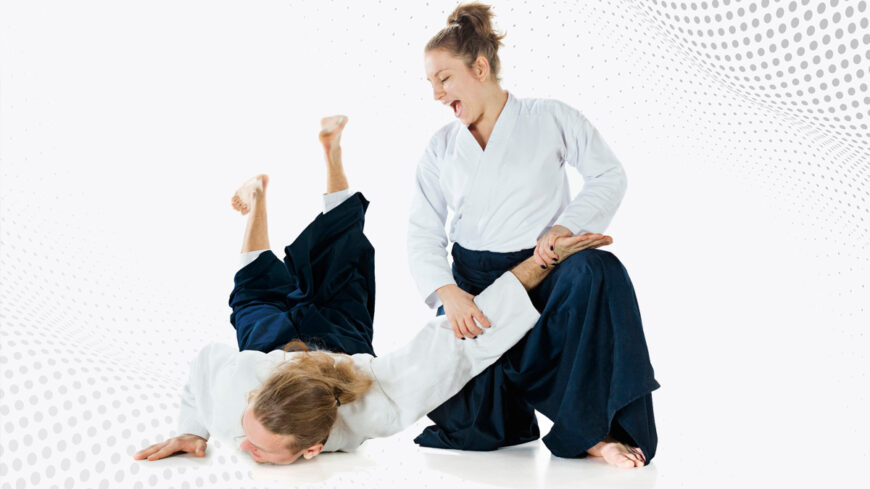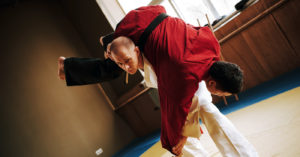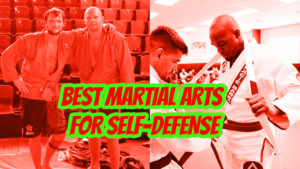In the world of martial arts, Aikido stands out for its focus on harmony and peacefulness. With a rich history and unique philosophy, many wonder whether this Japanese art is an effective form of self-defense in real-world situations or simply a spiritual practice.
In this blog post, we will dive into the truth behind Aikido’s effectiveness, comparing it to other martial arts disciplines, examining its techniques, and addressing common misconceptions.
By separating fact from fiction, you will walk away with a clear understanding of where Aikido fits in when it comes to personal safety and self-defense.
Key Takeaways
- Aikido focuses on harmony and peaceful resolution, using an opponent’s energy against them through joint locks, throws, and evasive movements. While controversial for self-defense compared to more aggressive styles, it can be effective when applied correctly.
- Self-defense is about neutralizing a threat and preserving personal safety rather than defeating an opponent. Understanding what constitutes effective self-defense helps in choosing the right martial art or system that aligns with individual goals and values to be prepared for dangerous situations.
- Effectiveness of Aikido in self-defense depends on situational context and individual training. Cross-training in other martial arts like Krav Maga or Brazilian Jiu-Jitsu along with fundamental understanding of applicable techniques used in specific situations leads towards well-rounded approach to self-preservation.
What is Aikido?
Aikido is a Japanese martial art developed in the 1920s by Morihei Ueshiba, an accomplished practitioner of Daito-Ryu Aiki-jujutsu and several other traditional martial arts.
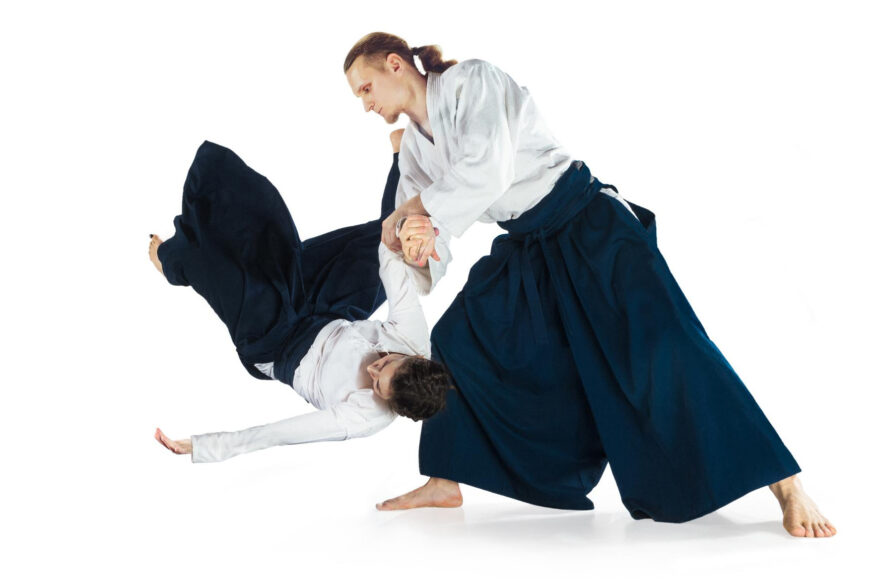
Often referred to as “the way of harmony,” Aikido emphasizes a philosophy of peace and harmony, focusing on blending with and redirecting an attacker’s energy rather than using brute force.
The core techniques taught in Aikido involve joint locks, throws, and evasive movements designed to neutralize or control opponents without causing significant harm.
Rather than relying on striking methods commonly found in other martial arts like boxing or karate, Aikido practitioners aim to use their opponent’s momentum against them through proper positioning, timing, and body mechanics.
In addition to its emphasis on conflict resolution without violence or aggression towards others (compassion), some training incorporates weapons such as the bokken (wooden sword) or jo (staff).
Definition of Self-Defense And Why It Matters
Self-defense is the act of protecting oneself or others from physical harm by employing techniques and strategies from various martial arts or self-protection systems.
The primary goal of self-defense is not to defeat an opponent but rather to neutralize a threat, escape danger, and preserve one’s personal safety.
Understanding what constitutes effective self-defense is essential because it helps you choose the right martial art or system that best meets your needs and aligns with your personal values.
With numerous options available, identifying a suitable discipline can be confusing, given each boasts its unique strengths.
To illustrate why this matters – imagine you’re out running alone when suddenly someone attempts to grab you forcefully against your will. Knowing how to react effectively could mean the difference between getting away unharmed or becoming a victim of violence.
By learning appropriate self-defense methods through disciplined training, you not only acquire valuable skills for escaping dangerous situations but also develop mental fortitude and increased confidence in navigating life’s uncertainties.
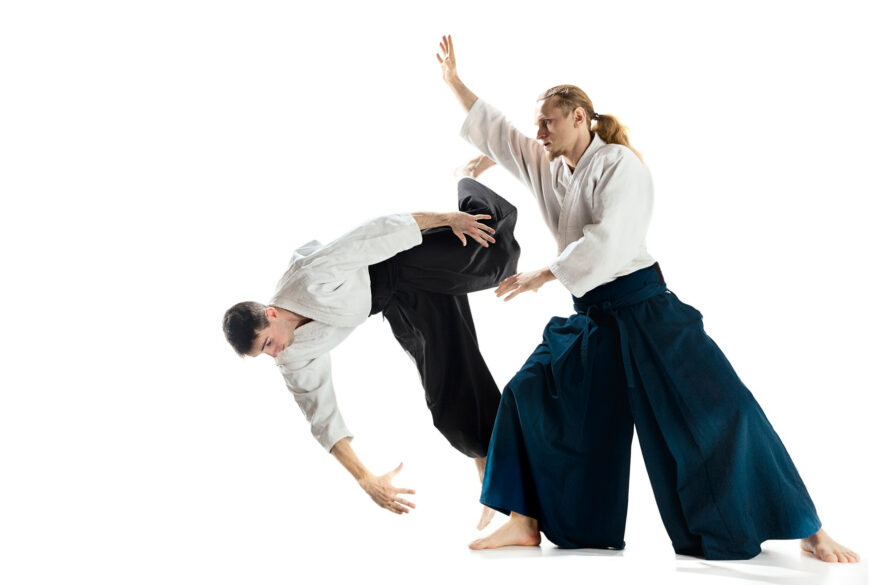
Effectiveness of Aikido In Self-Defense
Aikido, although controversial, can be useful for self-defense as it teaches practitioners to use defensive strategies such as joint-locks and throws with the goal of avoiding hurting the attacker.
Aikido Controversy
The Aikido controversy centers around the effectiveness of this martial art for self-defense, especially when compared to other more aggressive styles like Brazilian Jiu-Jitsu, Krav Maga, and MMA.
Some critics argue that Aikido’s focus on harmony and peaceful resolution can lead to a lack of practicality in real-life attack situations.
Despite these criticisms, many practitioners passionately defend Aikido as an effective form of self-defense when applied correctly. For instance, numerous police forces worldwide have incorporated elements from this martial art into their hand-to-hand combat training programs because it provides them with useful tools for controlling volatile situations without resorting to excessive force.
Advocates also assert that mastering Aikido’s evasive movements and joint manipulations allows skilled practitioners to neutralize potential threats without causing serious injury or escalation.
Does Aikido Work In The Street Fight?
Aikido can be effective in street fights or self-defense scenarios when the practitioner utilizes the fundamentals properly and deploys the proper techniques at the right time.
Aikido focuses on joint locks, throws, and strikes while defending oneself without causing serious injury to the attacker. However, as with any martial art, effectiveness depends on situational context.
In real-life situations where multiple attackers or weapons are involved, it may not be practical to rely solely on Aikido techniques.
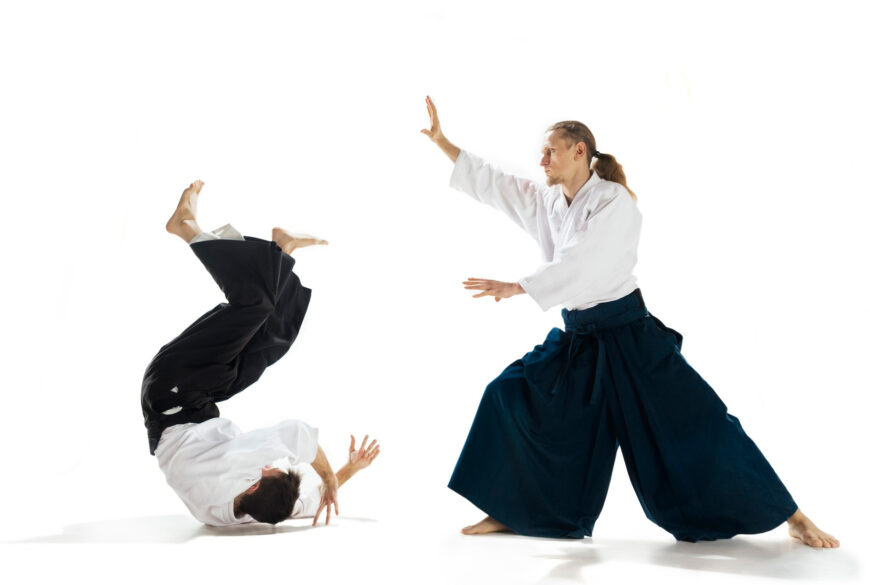
What Makes A Martial Art Effective?
To determine the effectiveness of a martial art for self-defense, you need to consider the type of training and techniques used, as well as its applicability in real-life situations – read on to discover more.
The Martial Art
Aikido is a martial art that focuses on using an opponent’s energy and momentum against them, rather than relying on brute force or strength. It is based on the philosophy of harmony and peacefulness, with its founder Morihei Ueshiba believing that hurting others ultimately hurts oneself.
Aikido techniques are centered around joint-locks, throws, and evasive movements that aim to neutralize a situation without causing serious injury to the attacker.
While some may view Aikido as less effective for self-defense compared to other martial arts like MMA or wrestling, it offers valuable skills in balance and coordination, flexibility, and mental well-being.
What makes a martial art effective for self-defense depends heavily on situational context and individual goals of self-preservation.
Training
Training is a crucial aspect of martial arts and can determine its effectiveness in real-life situations. Aikido training emphasizes the development of physical condition, mental well-being, and defensive strategies such as joint-locks, throws, and strikes.
The martial art also focuses on evasive movements through momentum shifts and footwork to overcome an attacker’s dominant position. To become effective in self-defense using Aikido, one must learn how to manipulate the opponent’s energy with techniques like Kuzushi (off-balancing) and Ukemi waza (falling).
However, Aikido may not be the most efficient martial art for self-defense in every situation. Training in other combat sports or self-defense systems like MMA or Krav Maga could provide more practical experience against realistic attacks by multiple attackers with weapons.
Comparing Aikido To Other Martial Arts For Self-Defense
We’ll compare Aikido with other martial arts, including MMA, boxing, kickboxing, Krav Maga and wrestling to evaluate its effectiveness in self-defense.
MMA (mixed Martial Arts)
MMA is considered the most efficient combat sport/martial art for self-defense due to its diverse range of techniques and practical application in real-life situations. MMA fighters are trained in striking, grappling, takedowns, ground fighting, and multiple offensive and defensive martial arts techniques.
MMA emphasizes the importance of both proactive and reactive training as well as situational awareness to prepare for any scenario that may arise. Many professional athletes cross-train in MMA to improve their fitness level, agility, strength, balance, and coordination.
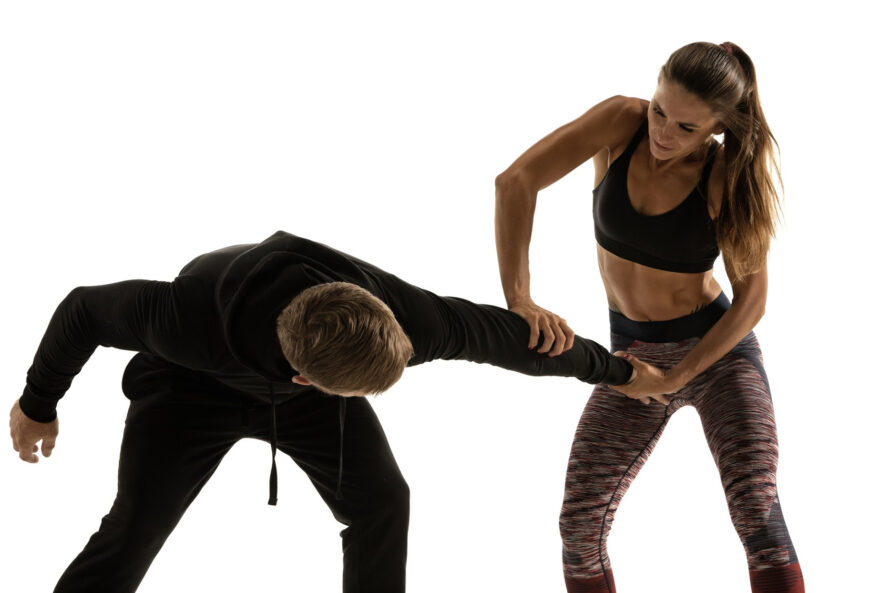
Boxing
Boxing is a popular combat sport that teaches fighters to use their fists for both attack and defense. While it may not have the same emphasis on philosophy as Aikido, boxing can be an effective martial art for self-defense purposes.
Boxers are taught footwork, quick movements, and defensive techniques like slipping punches to avoid getting hit. They also learn how to deliver powerful punches using proper technique.
In some ways, boxing is similar to Aikido in that it emphasizes evasive movements and momentum shifts rather than brute force aggression.
Kickboxing
Kickboxing is a combat sport that combines elements of martial arts, boxing, and karate. It involves striking techniques using punches, kicks, knee strikes, and elbow strikes.
Kickboxing is an excellent form of exercise for individuals who are looking to build their endurance, flexibility, balance, coordination, and cardiovascular health while learning self-defense skills.
Additionally, kickboxing classes involve high-intensity interval training (HIIT), which can help burn fat and calories quickly in the body.
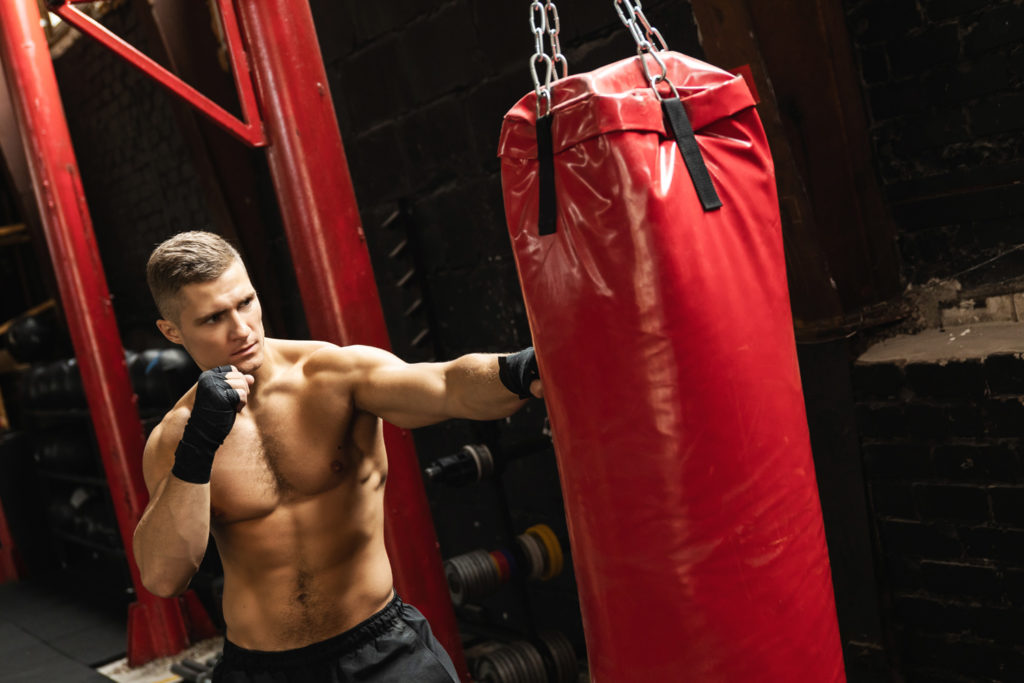
Krav Maga
Krav Maga is a self-defense system that originated in Israel, developed for real-world situations. It combines techniques from various martial arts and focuses on aggressive offensive moves to quickly take down opponents.
Krav Maga practitioners learn how to strike vulnerable areas of the body, such as the eyes or groin, and use joint manipulation techniques to subdue attackers.
What sets Krav Maga apart is its emphasis on situational context rather than rigid forms or techniques. It trains individuals to be reactive and proactive in dangerous situations, using their surroundings as weapons if needed.
Although it may not have the spiritual philosophy of Aikido, its practicality makes it an excellent choice for anyone looking to enhance their self-preservation skills while getting in shape.
Wrestling
Wrestling is often considered one of the most efficient martial arts for self-defense. It emphasizes takedowns, grappling, and ground fighting techniques that are essential for subduing an attacker.
Wrestlers learn how to control their opponents and use leverage to gain a dominant position. They also develop agility, balance, strength, and coordination through intense training.
Wrestling is widely used in mixed martial arts (MMA) competitions because of its effectiveness in close-range combat situations. Moreover, wrestlers have the advantage of being able to defend themselves against multiple attackers since they focus on taking down one opponent at a time rather than striking them like boxers or kickboxers do.
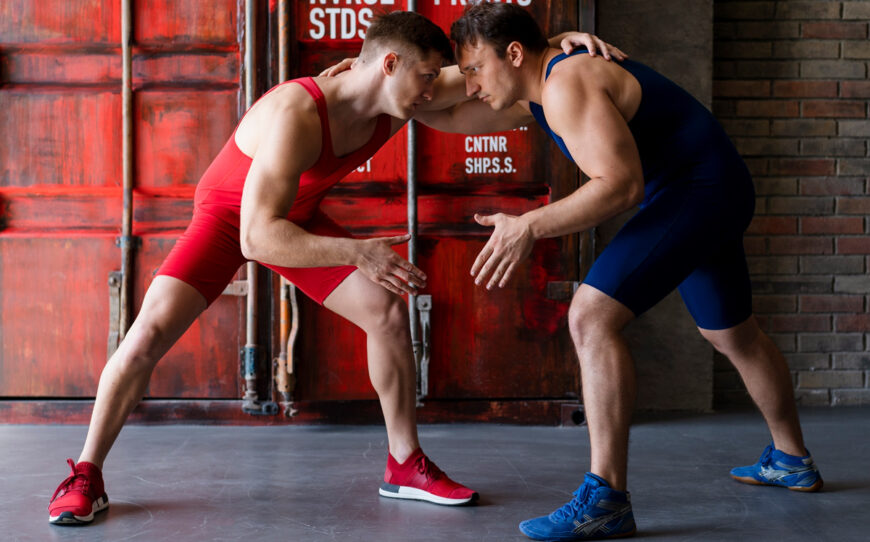
Also check: Wrestling vs Jiu-Jitsu: Who Will Reign Supreme in Combat Sports?
Aikido’s Reputation And Validation
Aikido has received criticism for being a “weak” martial art, but its philosophy of peace and harmony is what makes it unique and non-competitive; however, the effectiveness of Aikido in self-defense situations cannot be denied as it has been utilized by police and military forces worldwide.
Is Aikido’s Bad Reputation Justified Or Not Fair?
Aikido’s bad reputation as an ineffective martial art for self-defense is not entirely fair. While some argue that the techniques taught in Aikido do not work in real-world situations, others point out that Aikido focuses on non-violent solutions to conflicts and teaches defensive strategies.such as joint locks, throws, and strikes without inflicting unnecessary harm on the attacker.
Moreover, many Aikido practitioners attest to its effectiveness in improving their awareness of surroundings.and giving them the skills to avoid dangerous situations altogether.
The philosophy of harmony and compassion at the core of Aikido also sets it apart from other martial arts focused solely on physical combat.
Is Aikido A Dying Martial Art?
Aikido has been around for almost a century and has amassed a loyal following of practitioners worldwide. While it may not be as popular or visible as other martial arts, Aikido is far from dying.
In fact, many people are drawn to the art’s focus on harmony and inner peace rather than competition and aggression. Aikido dojos can still be found all over the world, offering training to students of all ages and skill levels.
Additionally, Aikido’s principles have made their way into other areas such as yoga, mindfulness practices, and even business leadership training.
Aikido In Police And Military Forces
Aikido is a martial art that is taught to police and military forces around the world. Here are some ways in which Aikido can be useful in these contexts:
- Aikido’s philosophy of non-violence, peace, and harmony can help de-escalate potentially violent situations by emphasizing communication and cooperation.
- Aikido techniques can immobilize and subdue attackers without causing serious injury, making it a more defensive rather than offensive martial art.
- Aikido is not the only martial art used by police and military forces for self-defense. However, its emphasis on joint manipulation techniques, off-balancing, and throwing can be useful in situations where law enforcement officers need to subdue suspects without using excessive force.
- Aikido techniques can be adapted for self – defense scenarios involving weapons. For example, practitioners can learn how to disarm an attacker wielding a knife or gun through specific training in weapon tactics.
- Aikido’s non – competitive nature makes it more suitable for police and military training than other combat sports such as MMA or boxing. It encourages collaboration between trainees rather than competition with each other.
- Aikido’s emphasis on movement and energy control can help maintain situational awareness during high-stress situations like hand-to-hand combat or active shooter scenarios.
- Aikido training can improve physical fitness, mental resilience, and decision – making skills among law enforcement personnel. These skills are crucial for those who face danger on a daily basis while serving their communities.
- The practical applications of Aikido in police and military contexts have been demonstrated in real – life situations. For example, there are documented cases of law enforcement officers using Aikido techniques to safely apprehend suspects without injuring them unnecessarily.
In summary, Aikido has proven to be an effective martial art for use in police and military contexts due to its defensive nature, adaptable techniques, non-competitive philosophy, focus on movement control, and demonstrated real-life applications.
FAQs
Is Aikido effective for self-defense?
Aikido can be effective for self-defense in certain situations, such as when facing unarmed attackers or those using non-lethal weapons. However, its techniques may not always work against armed assailants and require extensive training to become proficient at applying them correctly in real-world scenarios.
What makes Aikido different from other martial arts?
Aikido focuses on blending with an opponent’s movements and redirecting their energy rather than inflicting harm through strikes or kicks like most other martial arts. It also emphasizes using a combination of circular movements and joint locks to subdue opponents without causing significant injury.
How long does it take to learn enough Aikido for self-defense?
The amount of time it takes to master Aikido varies greatly depending on the individual’s dedication, natural ability and practice frequency but generally speaking – beginners can expect to spend around 6 months acquiring basic skills & concepts while advanced students might require many years before mastering all facets that make up this complex system of physical discipline.
Can someone with no prior experience learn Aikido for self-defense?
Yes, anyone regardless of age or previous experience levels can learn Aikido though there is definitely learning curve involved . With patience , practice& guidance from experienced teachers even complete novices have potential succeed if willing put effort in over time realizing benefits that come from investing themselves into this rewarding lifelong pursuit.
Conclusion
In conclusion, the controversy surrounding Aikido’s effectiveness in self-defense has been ongoing. While Aikido may not be sustainable for self-defense purposes alone, it can still be effective when combined with other martial arts or utilized properly in real-world scenarios.
Its philosophy of harmony and peacefulness also promotes physical well-being and mental clarity which makes it an excellent choice for fitness enthusiasts who value the practicality of martial arts.

